To say the MikroTik RDS2216-02XG-4S+4XS-2XQ might be one of the most exciting products of 2025 is an understatement. Combining a Marvell switch sporting 10GbE (SFP+ and 10Gbase-T), 100GbE, and 25GbE along with an Annapurna Labs Arm CPU for the server and NAS side is quite exciting. What is more, in terms of a NAS, this has space for 22 SSDs including 20x front-accessible NVMe SSDs and 2x internal SATA M.2 SSDs. As a first-generation MikroTik ROSE “SwitchNASServer” solution, there are a few things I would change, but we found a big catch that some of the rushed early reviews either missed or did not cover. That one is going to ignite the comments. Let us get to it.
As you might have guessed, we have a video for this one that you can find here:
We always suggest watching this in its own browser, tab, or app for the best viewing experience. The video is a bit longer than we usually do just because there is so much to cover.
MikroTik RDS2216-02XG-4S+4XS-2XQ External Overview
Starting off, the MikroTik RDS2216-02XG-4S+4XS-2XQ which we will just call “MikroTik ROSE” for most of this video, is a 1U $1950 MSRP system that combines a network switch, with some routing functions, a NAS, and some server functions into a single box. The idea is that the system combines everything into a single box.

The front of the system, we have our power button, status LEDs and a USB 2 port.
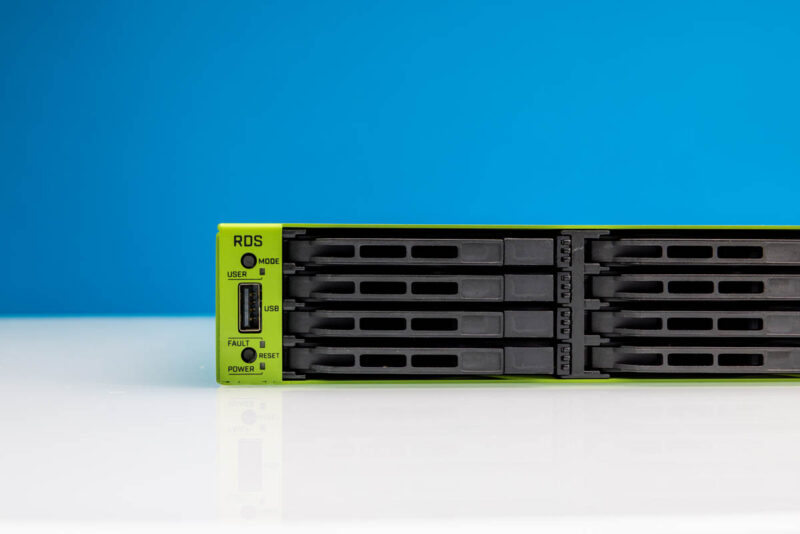
In the center, we have twenty U.2 SSD bays.
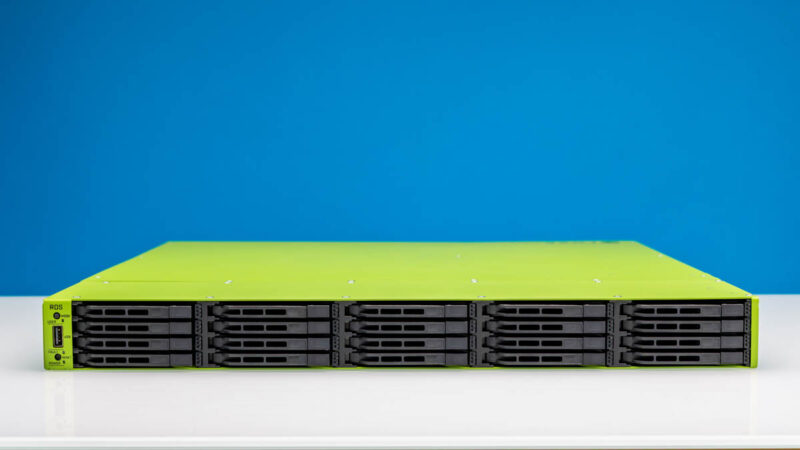
Luckily, MikroTik includes tool-less drive trays, otherwise this would take 80 screws to install the drives.
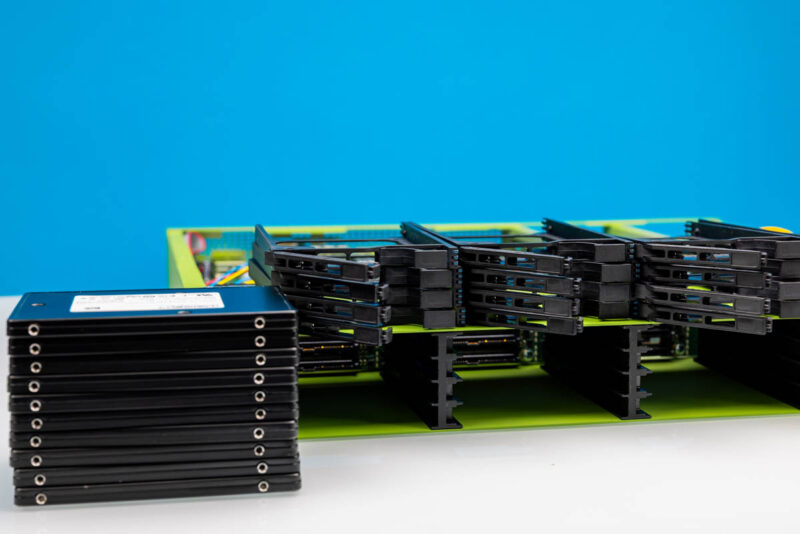
One of the challenges, is that these drive bays are not just NVMe bays but they are 7mm. Finding 7mm U.2 drives is a bit difficult these days as enterprise drives are usually 15mm. That has two impacts. First, the selection of drives is not great. Second, the capacities are lower. 15mm drives that are 8TB and under can be purchased second hand relatively inexpensively, and the 15mm form factor already scales to $30K+ (new) drives that are 122.88TB. You just get more options in the 15mm sizes. The third challenge is that this means we only get PCIe Gen3 x2 to each drive, and not even a full x2 to all of the drives at that since they are switched. The first thing we would change with this is to switch to fewer 15mm drive bays.
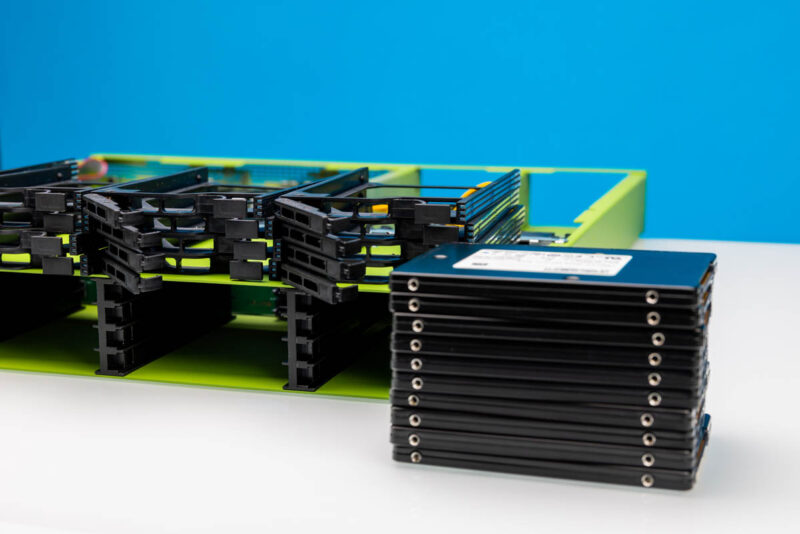
There are rack ears and rear hooks for the system.
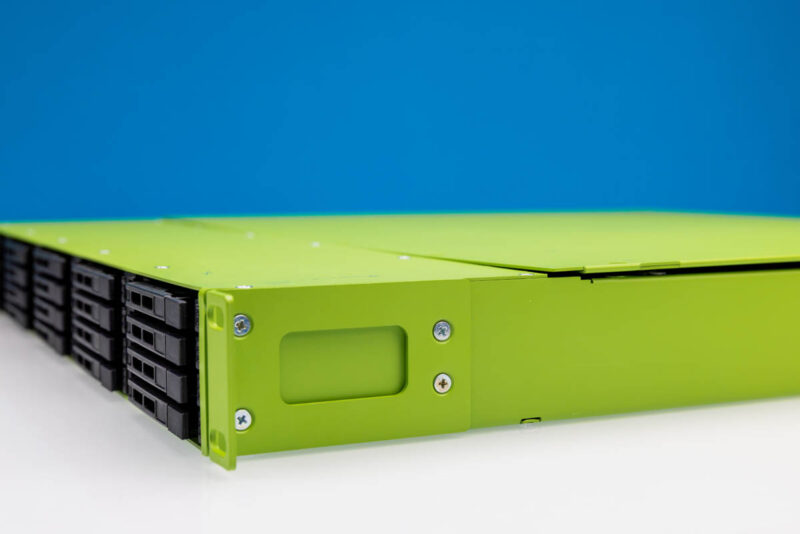
On the side, we get a door that you should not need to access often, but it has a neat feature.
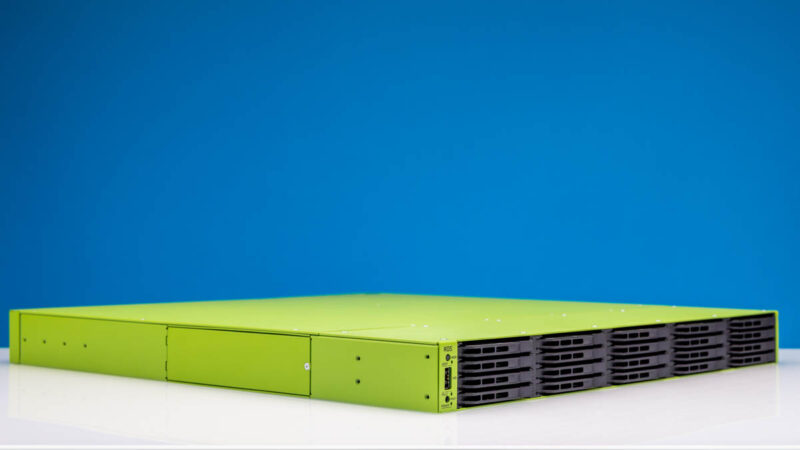
MikroTik has a custom PCB to bridge PCIe Gen3 x16 between the main board and the PCIe switch and backplane board. Normally we would simply expect to see cables, but since this needs to be a service item, there is a door on the side of the chassis.
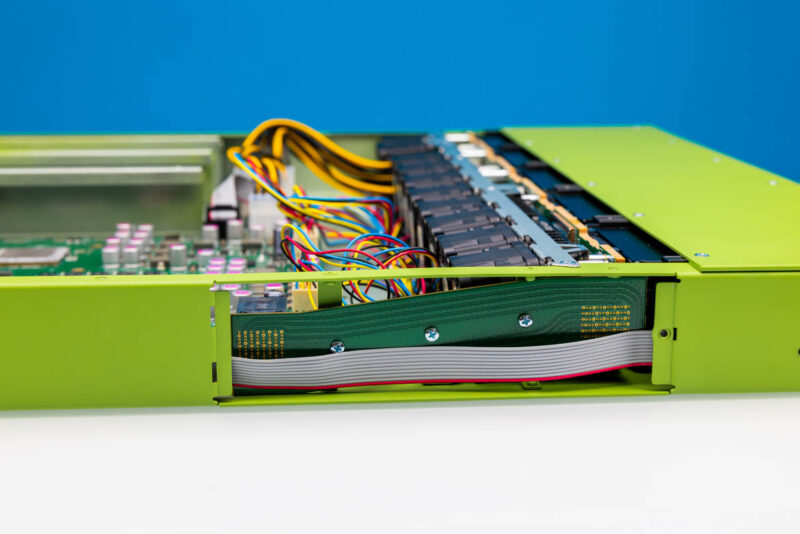
Moving to the rear, we get something that almost looks like a server, except for the fact there is a lot going on here.

First, we get redundant 550W power supplies made by Delta. It is great that MikroTik is using a big-name manufacturer for them.
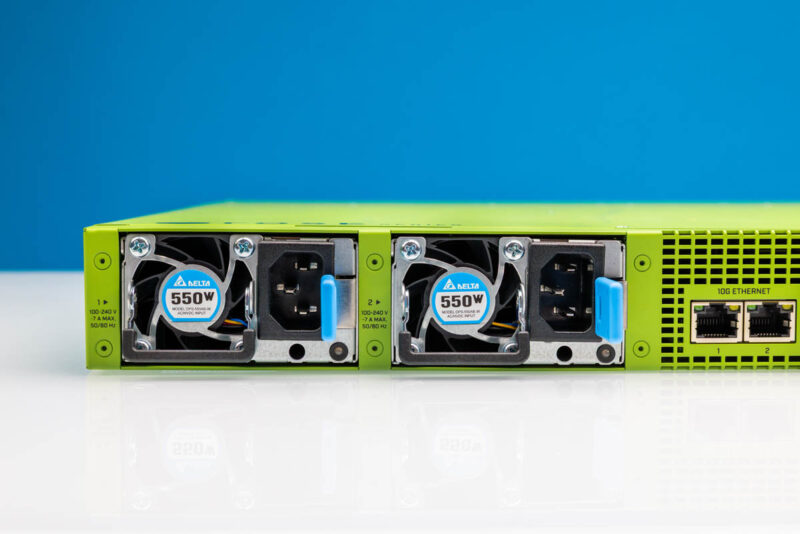
The back of the system has a ton of ports. There are two 10Gbase-T ports, four SFP28 25GbE ports, two QSFP28 100GbE ports, and four SFP+ 10GbE ports. This is a ton of networking onboard because, despite there being 20x NVMe SSDs attached, there is also a Marvell switch chip.
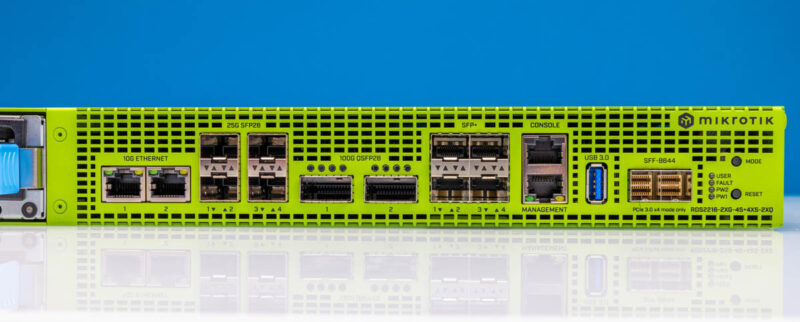
Of course, there is more. We have a console port, and an out-of-band management port. There is also a USB 3.0 port. Unlike most servers, we do not have an ASPEED AST2600 BMC with a VGA output, so this is managed more like a switch than a server.
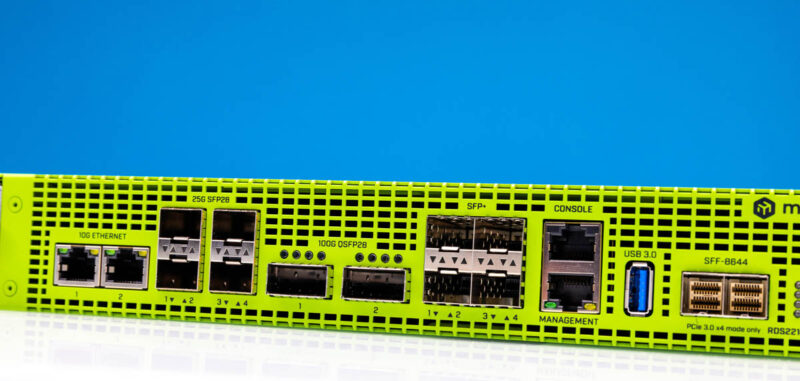
The last feature, aside from the status LEDs, is a pair of SFF-8644 ports. SFF-8644 is a standard that displaced SFF-8088 in SAS systems, but it can also be used for PCIe Gen3. That is what it is used for here. The two ports each have PCIe Gen3 x4 for eight lanes of external PCIe connectivity. Just be aware, these do not carry SAS signaling, so you cannot hook up a SAS shelf to the ports. In theory, you could hook up a chassis with an internal PCIe SAS controller, and get additional hard drive expansion that way.

At this point, you are probably wondering how wild it gets inside, and in that case, MikroTik does not disappoint, so let us get to that next.

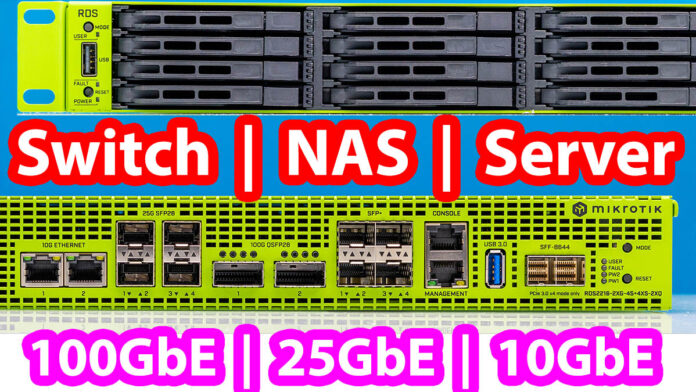
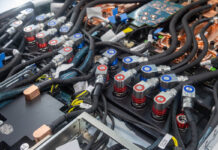
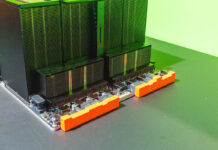
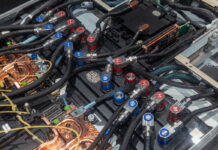
Meh. Albatross.
One would wish for something with more… configurability and modularity.
Also I don’t see the point of thin 19″ rack if this is to be for small customers with specific needs.
Those typically have bottleneck in direct $$$ not enclosure form-factor and height.
I watched the Raid Owl review of this. He never mentioned the hot swap issue. It’s plain as day in the video you can see it reset. What a fing farce that guy is. That’s why I like real sites not YouTubers that you can’t trust
No hot-swap support with 20 drives is just a no-go. This would be awesome with 4x 3.5″ SAS-3/NVMe -or- 10x 2.5″ 15mm NVMe, if hot-swap was available. The 32GB of RAM is also a hard limit regularly these days, so 128GB would be a much better start.
I think the idea is nice for a small company or branch office, the many different high-speed connectivity is a plus for that price point. But it lacking basic enterprise features makes this more of a homelab piece of kit instead of a good choice for businesses.
This one feels a little odd: as a concept it is super lovable: I just hate the branch-office dilemma of either a whole half-rack of underutilized widgets that could support an office twice to ten times the size but just don’t come any smaller except possibly as awful plastic boxes with wall warts and no redundancy; and it’s got that cheerful Microtik pricing and power consumption that isn’t from used enterprise kit 3 generations old.
However, while its concept is the little do-it-all box the RAM and storage are really, really, inflexible for the purpose: even just a plastics kit option that allows you to replace some of the 7mm support trays with ‘every-other’ 15mm support trays would go a long way; and (given that caches and DVRs are two super common use cases) some option to sacrifice SSDs for bulk SATA(either SATA on the ‘every-other’ 15mm or a variant with 3.5in slots) would be an obvious nice to have; and more or expandable RAM would be super helpful: can you get a lot into really thrifty container configs? Sure. If I am looking to equip a relatively small number of branch locations can I afford a fair amount of RAM for what it would cost to either have more talented people configure my containers or have the existing people put extra time into slimming containers down rather than just grabbing defaults and calling it good? Yes indeed; admin time that you’d want doing that can creep up on you fast.
The RAM seems like just a sticking point(though, as noted, the price is right enough just for the switch side of things that you can forgive some sins; it’s just that you are totally blowing past the point if you run out of RAM and need to drag a separate server into it; since the cost of going from zero extra server to 1 extra server will be much higher than going from 32 to 64 or 128GB of RAM; and adding extra RAM will probably be cheaper on the separate server, at least up to 128, possibly not if you need high density DIMMs); but some of the storage-related complaints seem like they could be addressed depending on what, if anything, Mikrotik or others do with those external PCIe lanes.
Normally external PCIe cardcages seem to be obnoxiously expensive(still often worth it if you can now bring that one PCIe card and just a laptop rather than an entire desktop when travelling; or add a GPU or high speed ethernet to a laptop or the like); but expensive enough that they really ruin the numbers on any “let’s use this mini-PC that has thunderbolt or oculink rather than an a mini-ITX or a short depth server that has a couple of card slots!” project; but if Microtik or someone else pop out a few cheerfully priced and relatively simple options that you can use to add some 3.5in SATA mass storage or just a few arbitrary PCIe cards or similar using those external expansion ports that would add a lot of versatility.
Why don’t they just hire @Patrick to make their hardware. If they want to make a NAS or a server it seems dumb not to just hire him and say “tell us what to do” or at least “hey what do you think of this idea?” I’d dream of Patrick designed boxen.
Well, if they hire @Patrick to build the hardware, who’s actually competent enough to fix the software that’s obviously nowhere near what Synology and QNAP offer?
I was thinking they could add some hybrid cages that could either take four 7mm or two 15mm drives. Have two of the U.2 connectors sit slightly further out for the 15mm option and design some slids that can take either one wide or two narrow caddies.
On a different topic, they could have also used SATA drives. 20 of them would give 6*20=120Gbps, which would more or less saturate the 128Gbps of PCIe bandwidth available. Sure, older tech, but would likely use less power and be close in performance.